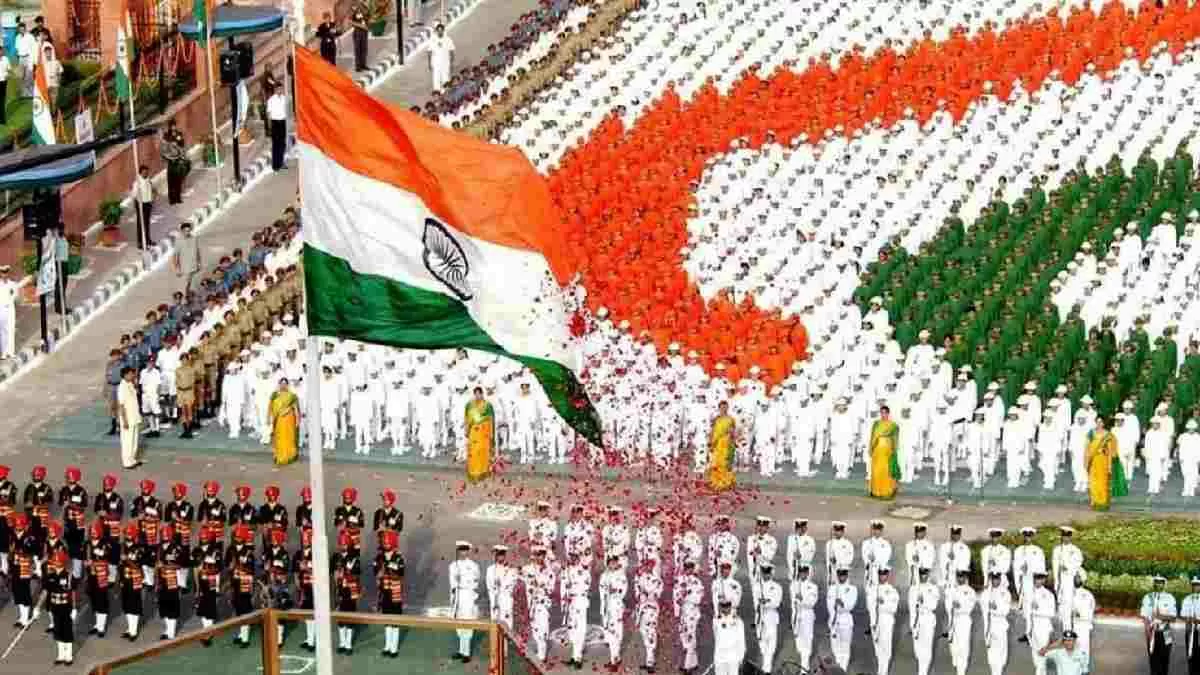Independence Day 2022: India is celebrating 75 years of Independence on August 15, 2022. The Government of India has launched various initiatives and programs to mark this historic day. India gained Independence from British rule on this day in 1947 while the Constitution was adopted in 1950.
No doubt it was not easy for India to get freedom from British rule. But our political leaders, freedom fighters, and people together participated in the freedom struggle and were determined to gain independence.
On 15 August i.e. Independence Day is a gazetted holiday that means the national, state, and local government offices, post offices, and banks remain closed. Even stores and other businesses and organisations reduced their opening hours or may be closed.
Happy Independence Day 2022: Wishes, WhatsApp Messages, Quotes, Slogan, Images & SMS
Indian Independence Day: History
In 1757, British rule began in India which was followed by the victory of the English East India Company at the Battle of Plassey and gained control over the country. East India Company took control in India for almost 100 years and then the British crown replaced it via Indian Mutiny in 1857-58. During World War I, the Indian Independence movement was started and it was led by Mahatma Gandhi who advocated the method of nonviolent, non-cooperation movement which was followed by the Civil Disobedience movement.
In 1946, the Labour Government, the exchequer of Britain thought of ending their rule over India because of their capital loss during World War II. Then, the British Government in early 1947 announced to transfer all powers to the Indians by June 1948. But the violence between Hindu and Muslims was not decreased basically in Punjab and Bengal. In fact, in June 1947 several leaders like Pandit Jawahar Lal Nehru, Mohammad Ali Jinnah, Abul Kalam Azad, B.R Ambedkar, etc. agreed to the partition of India. Millions of people from different religious groups started finding places to reside. And due to this approx 250,000 to 500,000 people died. On 15 August, 1947 at midnight India got independence and was concluded by the Jawahar Lal Nehru speech "Tryst with destiny".
What is the Indian Independence Act 1947?
The British Prime Minister Clement Atlee on 20 February, 1947 declared that the British rule in India would end by 30 June, 1948 after which the powers would be transferred to responsible Indian hands. This announcement was followed by the agitation by the Muslim League and the demand for the partition of the country. Then, on 3 June, 1947, British Government declared that any Constitution framed by the Indian Constituent Assembly which was formed in 1946 cannot apply to those parts of the country which were unwilling to accept it. And so on the same day that is on 3 June, 1947, Lord Mountbatten, the viceroy of India put forth the partition plan which is known as Mountbatten Plan. Congress and the Muslim League accepted the plan. The immediate effect was given to the plan enacting the Indian Independence Act 1947.
On 14-15 August, 1947, midnight, the British rule came to an end, and power was transferred to the two new independent Dominions of India and Pakistan. Lord Mountbatten became the first governor-general of the new Dominion of India. Jawahar Lal Nehru became the first prime minister of Independent India. The Constituent Assembly that was set up in 1946 became the Parliament of the Indian Dominion.
Indian Independence Day: Celebrations
Every year the Army, Navy, and Air Force marched across the Red Fort and the school children in colorful dresses in front of the dignitaries and the audience give performances.
Prime Minister of India unfurls the flag and holds a speech at the Red Fort. Several cultural programs are held in the state capital Delhi by various schools and organizations but this year due to the ongoing pandemic the celebration will be different.
People on Independence Day fly kites which symbolise the free spirit of India. Red Fort in Delhi is also an important symbol as on 15 August, 1947, the first Prime Minister of Independent India Jawahar Lal Nehru unveiled India's flag. Several people attend the flag hoisting ceremony in the city of Delhi which is a beautiful experience to watch. And some people watch patriotic cinemas; watch the Red Fort ceremony in their houses on TV. The whole nation celebrates this day with full enthusiasm and with the spirit of patriotism.
So, Independence Day in India is celebrated in various ways and with full patriotic feelings. We are proud to be Indian.
Happy Independence Day!
Independence Day 2022: 18 Laws and Rights must be known to every Indian
Independence Day 2022: Summary of Indian National Movement
75 Years of Independence Celebration: Know India’s Journey of Science & Technology Development
